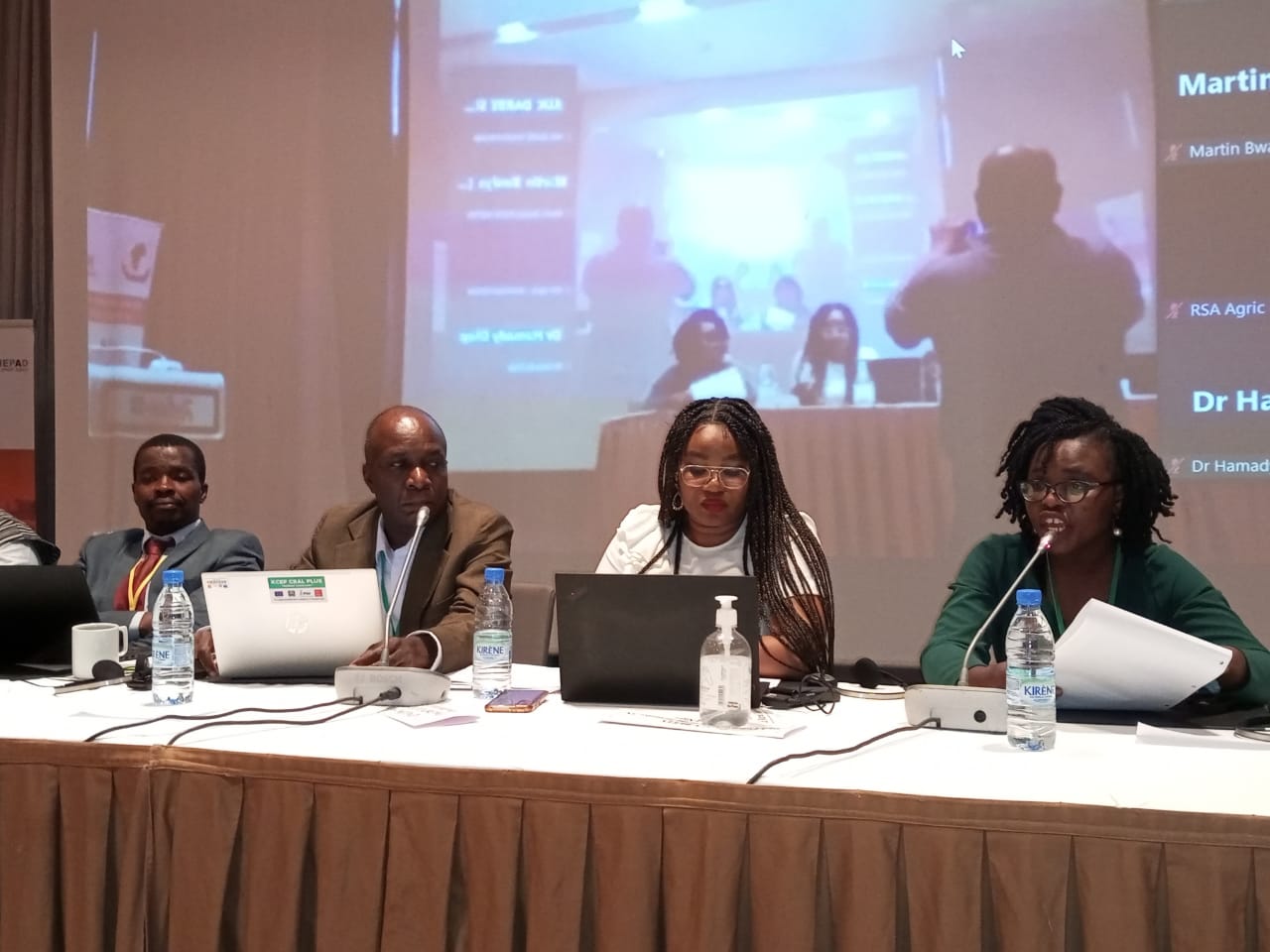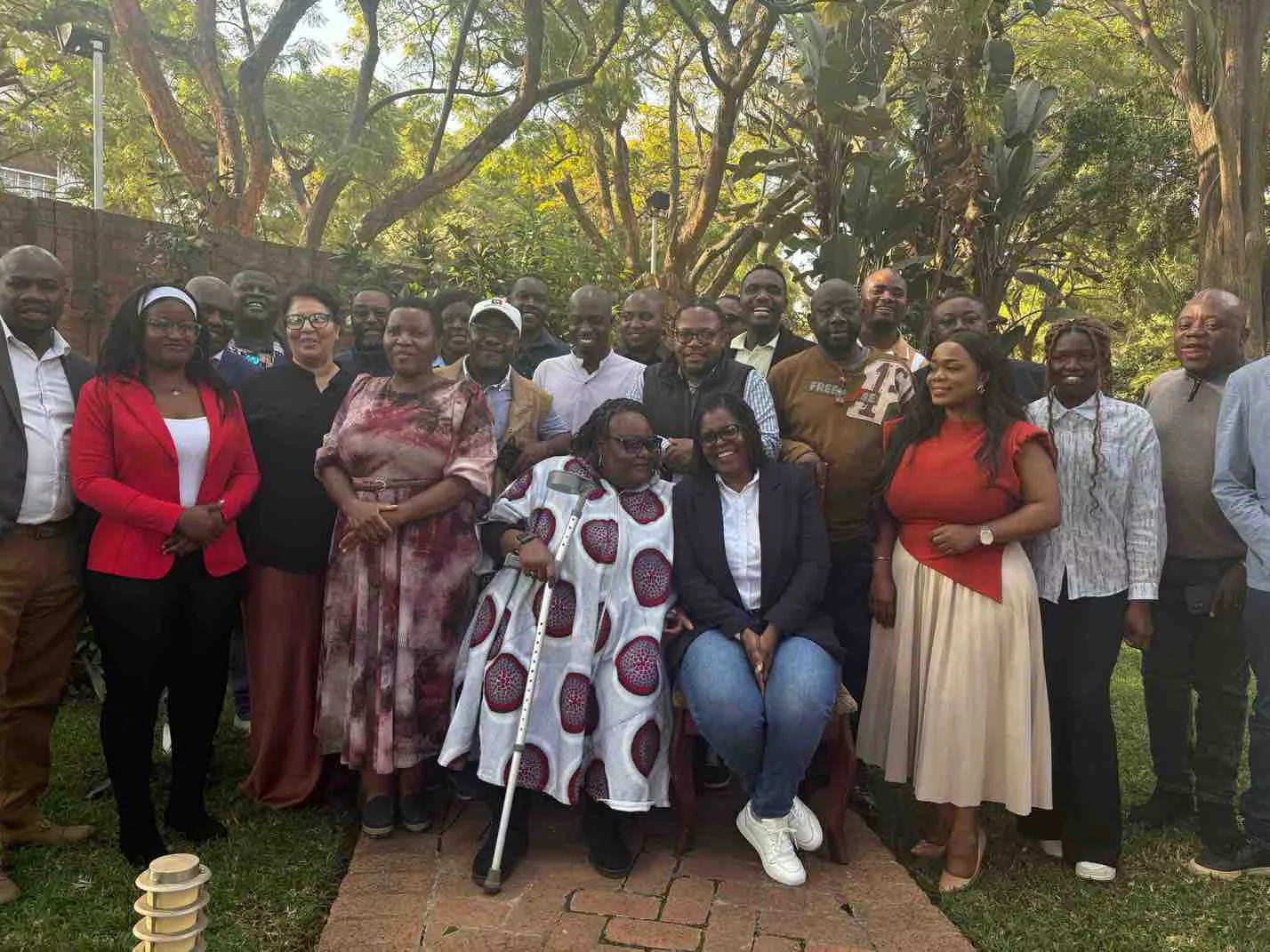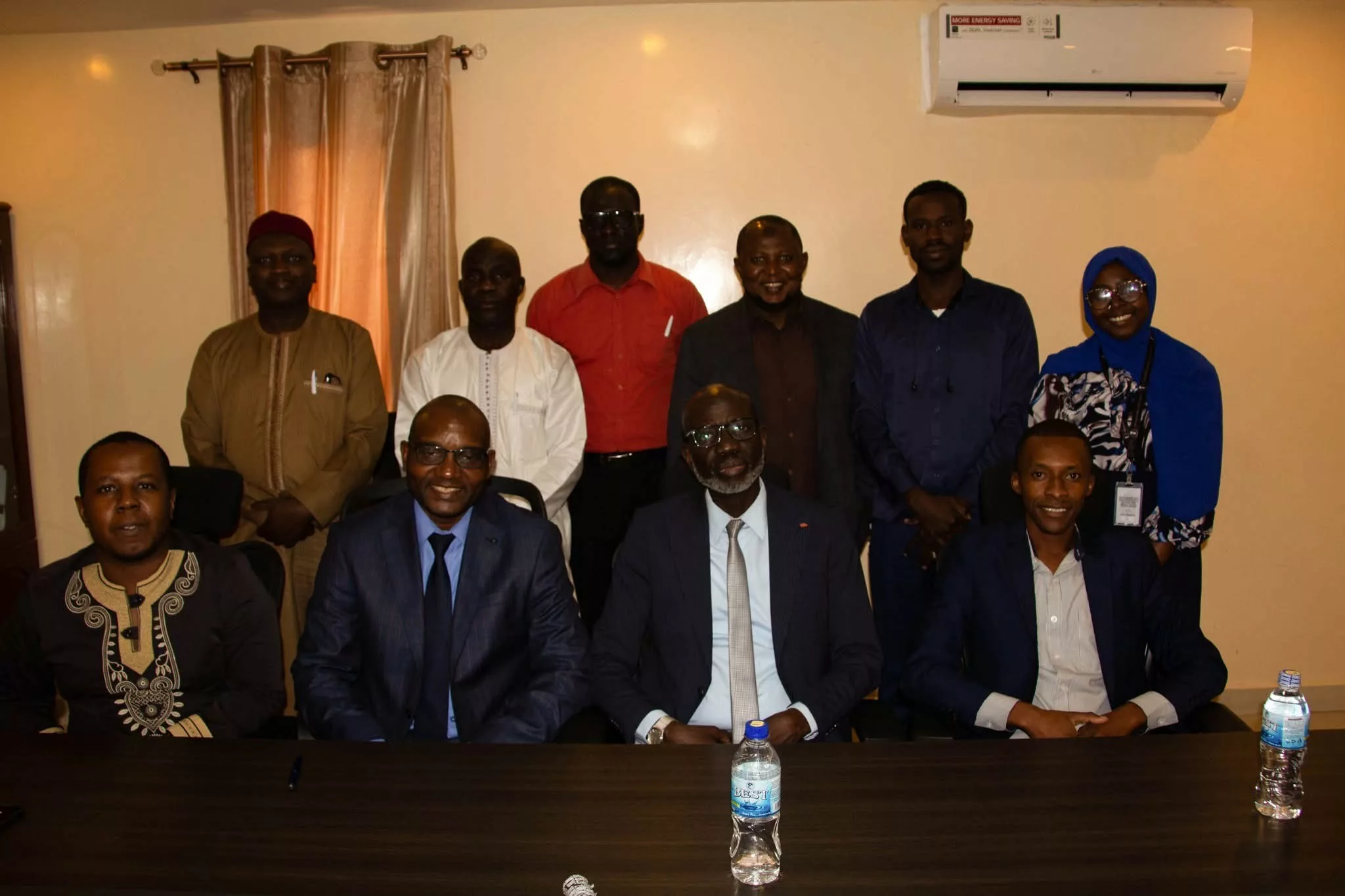|
Getting your Trinity Audio player ready...
|
Human capital development plays a key role in the implementation of the National Agricultural Investment Plans (NAIPs) as espoused in the Comprehensive Africa Agriculture Development Programme (CAADP) in pursuit of achieving the delivery of the Malabo Declaration on Africa Accelerated Agricultural Growth and Transformation.
This emerged today during a panel discussion at the high-level NAIPS policy dialogue meeting in Dakar, Senegal where stakeholders shared their experiences and insights on the role of human capital development in driving the implementation (technical and management skills and competencies as well as research and analytical capabilities) of NAIPs.
“This was a move to ensure full participation of the Planning Department to improve coordination and alignment with National Planning Frameworks. AUDA-NEPAD and COMESA also provided some level of coaching and mentoring for the leadership of the CAADP-NAIPs (CAADP Focal Point and Principal Secretary knew exactly who to call). A courtesy visit was also made to the Prime Minister’s Office by the former AUDA-NEPAD CEO, Dr. Ibrahim Mayaki to rekindle the re-engagement to CAADP Implementation.
“We discovered that limiting capacity building to Agriculture Ministries does not work. There is a need to vigorously include and out scale capacity building to central agencies and other private sector and civil society players. Teamwork is very important. A core technical team was established and mentored to deliver the NAIP. This was in addition to the CAADP Country Team which was too big and high-level. To achieve good results, the CAADP Focal Point should not work alone. there is a need to capacitate CAADP Focal Point to build teams. Sometimes the temptation is to focus on the administration structure yet there is a need to review and uphold their roles,” Mbuyisa said.
On the importance of building trust and motivation, Mbuyisa said the support from FAO, COMESA and AUDA-NEPAD helped to build the trust and believe that the local team with back-stopping support can deliver the NAIP. The leadership of the Ministry fully endorsed the Technical Team and requested resources to be provided for the drafting process and compensation for technical team members.
The agricultural expert said the NAIP implementation is driven by those who are aware of the goals of NAIP. From the planning stages, consultation meetings were held with various stakeholder groupings including Farmers’ Groups, Members of Parliament, financial institutions, NGOs, Business Federations, agribusiness operators, Development Partners and government departments.
As a result, the Government increased the budget allocation focusing on water harvesting and irrigation development, smallholder farmer support programmes, subsidies for maize, beans and sorghum, and subsidies for smallholder farmers’ access to mechanization.
He bemoaned the fact that the private sector was left out because the priority programmes were not designed in a linked value chain approach.
Policy and economic analysis skills are required in the planning drafting stages to perform diagnostic analysis and present developmental scenarios and investment options or combinations to achieve certain targets (use of up-to-date econometric models and other pertinent data management and analysis techniques).
Some of these skills were outsourced but going forward, there is a need to build them within countries and government institutions and encourage governments and partners to equip personnel with the tools
Turning to resource mobilization skills and agriculture financing models, he said having good plans is not enough. There is a need for strong resource mobilization capacity ranging from repurposing public budgets, designing new domestic revenues (inclusive of levies/taxes) for agricultural investment (kind of expenditures), structuring PPPs (promote and resource capital funding), tapping into money markets, warehousing, and global development finance.
Regarding the meeting in Dakar, he said the High-level Investment Meeting is good but should not be the end game hence the need for continuous engagement and shaping of investments as a continuous process.
Mbuyisa said a number of actors need to be trained in agribusiness planning and management. These include extension officers and many service providers, farmers, and financiers, among others. These should be tailored to country-specific priority value chains. Some of the NAIP priorities are not fully achieved because agribusiness and its supply chains are not fully understood.
Project management and monitoring and evaluation skills are key to further informing, designing, justifying, monitoring, reporting and evaluating investments.
If governments are to efficiently deliver and meet the expectations of their citizens there is a need for strong leadership and a healthy competitive environment in the workplace.
Caleb Muhatia Kisienya said in order to domesticate the Maputo CAADP, Kenya developed the Agriculture Sector Development Strategy (ASDS 2010-2020) as a tool for implementing the NAIP.
“CAADP has had initiatives through a development strategy that has an investment plan of IBS 2010 to 2015 that was affected by devolution. The agricultural transformation strategy has seen investment plans from 2019 to 2023 meant to implement the agricultural strategy. To achieve NAIP, there is a need for collective responsibility among the government, the private sector and CSOs.
“There is a need to address human capital development as an essential element since an efficient human resource pool works to maintain desired expectations to inform planning. Kenya has an adequate supply of human resources to analyze the NAIPs. Nairobi University and Jomo Kenyatta University offer programs that assist in implementing investment plans,” Kisienya said.
Due to the challenges facing the sector, there has been a paradigm shift in the way the issues confronting the agriculture sector need to be addressed. Human capital is a very essential element for achieving sustained growth in the sector. Advances in agricultural research and development are aided and supported by an efficient human resource pool built and accumulated over years.
Extension policies/structures for the execution of investment plans are aligned to the Kenyan Constitution of 2010. The implementation of policies and programmes is the role of devolved governments at the county level. Policy formulation is a national function while policy analysis to inform policy is undertaken by the Kenya Institute of Public Policy Research and Analysis and TEGEMEO – a public Institution of Egerton University.
Among the challenges in implementing NAIP, agriculture-related courses in colleges and universities are becoming unattractive to the youth since there is no guarantee for employment hence diminishing the pool of skilled resources. There is also a low staff-farmer ratio in the sector. The devolved government has a low capacity in terms of human resources (very few staff to serve an increased number of small-scale farmers). there are also no staff development strategies. On the other hand, an ageing workforce with no succession plans hampers the sector, coupled with a freeze in recruitment. The low dissemination of research findings arising from low funding and poor coordination are also a challenge.
The signing of the 2014 Malabo Declaration had many benefits. It reinforced the 2003 Maputo Declaration and the need for accelerating CAADP Implementation. The signing signified the commitment to enhancing investment finance in agriculture, ending hunger by 2025, halving poverty by 2025, and boosting Intra-African Trade in Agricultural commodities and services.
It was also a commitment to enhancing resilience in livelihoods and production systems to climate variability and other shocks as well as a commitment to mutual accountability to actions and results.
For nearly forty years, Africa experienced economic stagnation and food crises in the Horn of Africa, Southern Africa, and Central Africa. since African leaders wanted sustainable solutions to end hunger and (rural) poverty in a collective manner, they implemented CAADP.
Focusing on another dimension that affects human capital development, Kefilwe Fifie Moalosi, the African Union Development Agency (AUDA-NEPAD) Senior Nutrition Officer alluded to the Comprehensive Organizational Health Assessment (COHA) study that estimates the social and economic impact of undernourishment of infants at the level of the health sector, education and labour productivity and underscored the need to strengthen the resilience of nutrition and food security on the African continent.
She said the study provides scenario-based analysis that projects savings gained from reducing undernutrition; provides compelling arguments to support the concept of human capital gain that will help consolidate Africa’s economic expansion, and provides the evidence base to justify the need to increase investment in nutrition.
“There are huge costs associated with failing to invest in nutrition. Due to underweight, 24.5 million extra cases of illnesses are generated that need health attention. This problem increases health costs for countries. The total health cost is around 4 million dollars in Lesotho to 800 million dollars in Sudan. In terms of GDP, this cost ranges from 0.11% of GDP in Egypt to 2.9% of GDP in Chad. The total cost loss for health as a result of additional illnesses is $ 3.228 billion. Which is equivalent to the GDP of Liberia in 2018,”
Malnutrition also has a negative bearing on education. Nearly 2.1 million children repeated a grade during the year of analysis because they suffered stunting during childhood. Those children represent 18.4% of the total number of repeaters in these countries. On average, stunted children achieved 1.8 fewer years of schooling than populations that have not.
The cost of stunting in productivity is 27 billion dollars. The higher cost is due to mortality associated with stunting. Ethiopia followed by Kenya has the highest cost due to productivity. Guinea Bissau and The Gambia have the lowest cost in terms of productivity.
Dorcas Tawonashe, the Deputy Director for Strategic Planning and Business Development in the Ministry of Lands, Agriculture, Fisheries, Water and Rural Development for Zimbabwe shared experiences from her country in driving NAIPs through human capital development.
She made reference to the Zimbabwe Agricultural Investment Plan – ZAIP (2017 to 2021) which consolidates agricultural investment plans.
“In Zimbabwe, there is enough human capital and managerial skills. ZAIP brings together ministries, donors, and the private sector. Expertise in implementing the NAIP is drawn from ministries and various partners. Research into the NAIP is fed from p[artners like FAO, World Bank, and CSOs who developed value chain studies according to provincial needs and priorities through a multi-sectoral approach,” Tawonashe said.
Among the challenges in the implementation of ZAIP, Tawonashe said initially there was no updated information. She also highlighted inadequate expertise and the support of various stakeholders providing expertise, and the lack of mainstreaming monitoring and evaluation for capacity development as some of the hindrances to implementing NAIPs in the country.
“For us to win, there is a need to put in place monitoring and evaluation as well as knowledge management systems. Farmers should develop bankable projects that are acceptable to the private sector players who need a return on investment. They should find strategies to attract private sector investment and embrace expertise in matchmaking in areas of investment, taking advantage of competitive investment in a specific province,” she said.
It also emerged that the hiring of international consultants who may lack local expertise and homegrown solutions compels the need to capacitate locals to participate in the implementation of ZAIP.
There is also a need for coordinated information flow from research findings coupled with policy harmonization and consistency.






